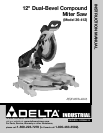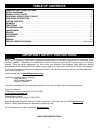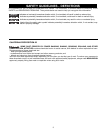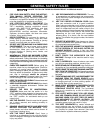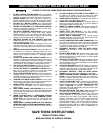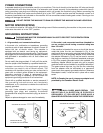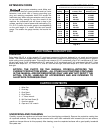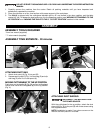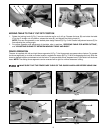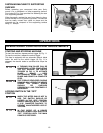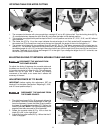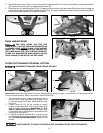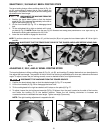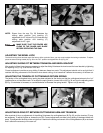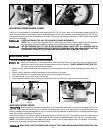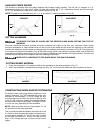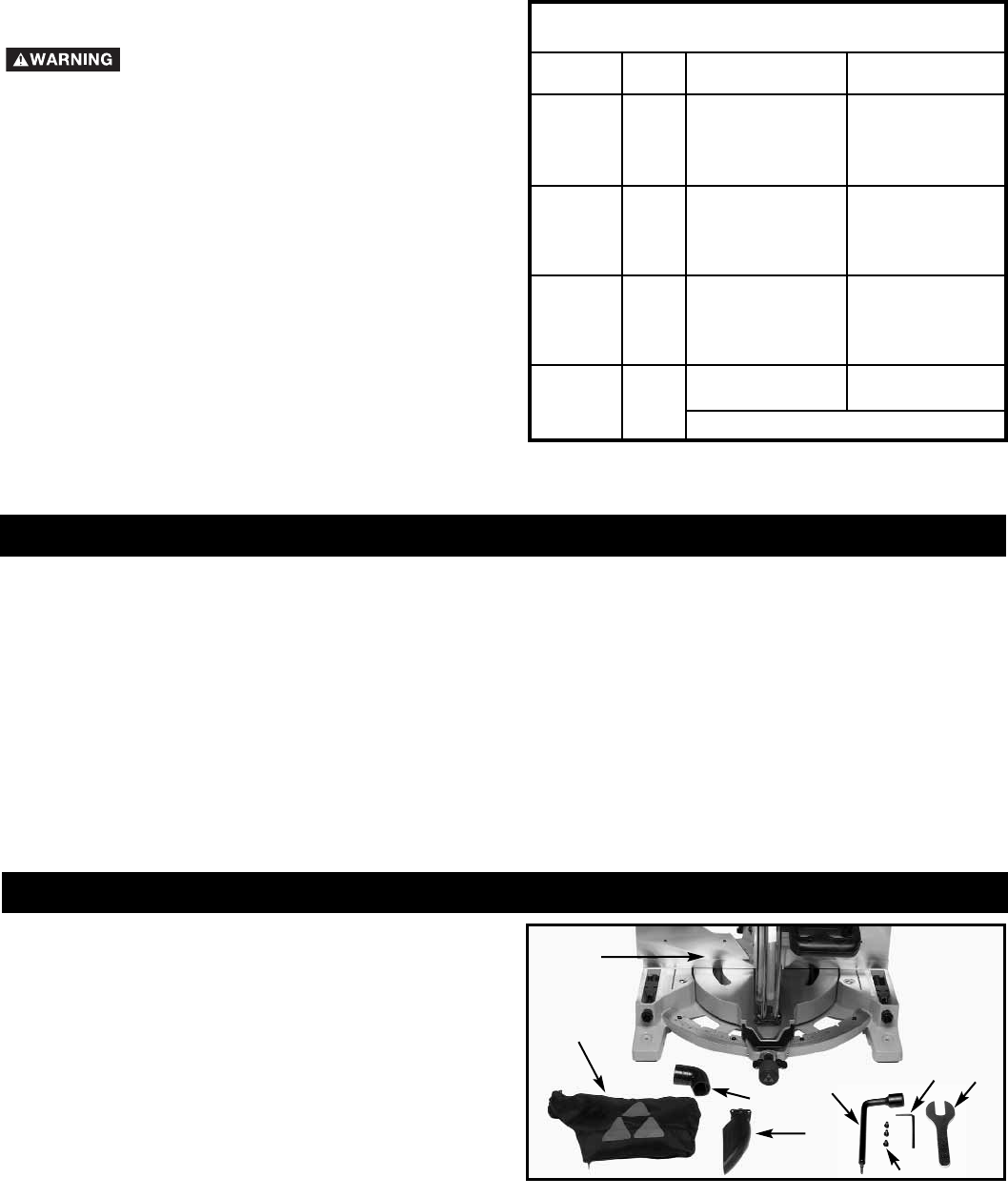
7
EXTENSION CORDS
Use proper extension cords. Make sure
your extension cord is in good condition and is a 3-wire
extension cord which has a 3-prong grounding type
plug and matching receptacle which will accept the
machine’s plug. When using an extension cord, be sure
to use one heavy enough to carry the current of the
machine. An undersized cord will cause a drop in line
voltage, resulting in loss of power and overheating. Fig.
D-1 or D-2, shows the correct gauge to use depending
on the cord length. If in doubt, use the next heavier
gauge. The smaller the gauge number, the heavier the
cord.
Fig. D-1
MINIMUM GAUGE EXTENSION CORD
RECOMMENDED SIZES FOR USE WITH STATIONARY ELECTRIC MACHINES
Ampere Total Length Gauge of
Rating Volts of Cord in Feet Extension Cord
0-6 120
up to
25 18 AWG
0-6 120 25-50 16 AWG
0-6 120 50-100 16 AWG
0-6 120 100-150 14 AWG
6-10 120
up to
25 18 AWG
6-10 120 25-50 16 AWG
6-10 120 50-100 14 AWG
6-10 120 100-150 12 AWG
10-12 120
up to
25 16 AWG
10-12 120 25-50 16 AWG
10-12 120 50-100 14 AWG
10-12 120 100-150 12 AWG
12-16 120
up to
25 14 AWG
12-16 120 25-50 12 AWG
12-16 120
GREATER THAN 50 FEET NOT RECOMMENDED
FOREWORD
Delta Model 36-412 is a high capacity 12" dual-bevel compound miter saw designed to cut wood and non-ferrous
metals. This machine is supplied with new design features that increase the cutting capacity, including built-in stops to
make cutting crown moulding easier. This machine can crosscut 2"x10" workpieces, miter 2"x6" workpieces at 45° both
left and right, bevel 2"x10" workpieces left at 45°, and bevel 1"x10" workpieces and 2"x8" workpieces right at 45°. It has
positive miter stops at 0°, 15°, 22.5°, 31.6°, and 45° both left and right, and bevel stops at 0°, 33.9° and 45°, both left
and right.
FUNCTIONAL DESCRIPTION
CARTON CONTENTS
Fig. 2
1
2
4
3
7
8
5
6
1 - Miter Saw
2 - Dust bag
3 - Dust Spout
4 - Dust Shroud
5 -
1
/2” Arbor wrench
6 - M4 Pan Head Screw (3)
7 - 2mm hex wrench
8 - Open end 7/16" wrench
UNPACKING AND CLEANING
Carefully unpack the machine and all loose items from the shipping container(s). Remove the protective coating from
all unpainted surfaces. This coating may be removed with a soft cloth moistened with kerosene (do not use acetone,
gasoline or lacquer thinner for this purpose). After cleaning, cover the unpainted surfaces with a good quality household
floor paste wax.
NOTICE: THE PHOTO ON THE MANUAL COVER ILLUSTRATES THE
CURRENT PRODUCTION MODEL. ALL OTHER ILLUSTRATIONS CONTAINED
IN THE MANUAL ARE REPRESENTATIVE ONLY AND MAY NOT DEPICT THE
ACTUAL COLOR, LABELING OR ACCESSORIES AND ARE INTENDED TO
ILLUSTRATE TECHNIQUE ONLY.



